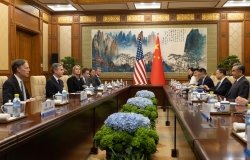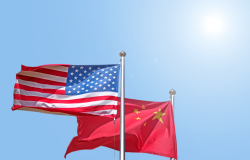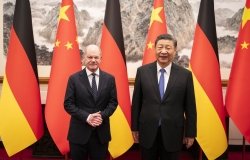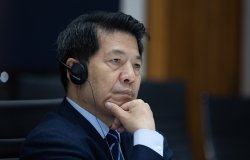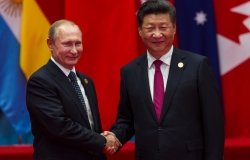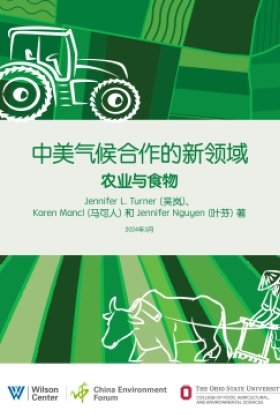China’s Foreign Propaganda Machine
The People’s Republic of China (PRC) has long suffered from a poor international image and weak “soft power.” The country’s negative image has hindered international acceptance of its rise as a global great power. Because the ruling Chinese Communist Party (CCP) wants China to “gain face” (yao mianzi) in the international arena, it has in recent years invested heavily in boosting the country’s international approval rating. Yet, to date, China’s considerable efforts to modernize its foreign propaganda apparatus have only been partly successful in shifting international public opinion. On the one hand, CCP efforts to raise global awareness of the country’s economic transformation have been very effective, as have its efforts to shape the discourse on Taiwan. On the other hand, as polls and other research show, CCP efforts to improve non-Chinese foreigners’ perceptions of China’s domestic politics and role on the international stage have so far largely failed to sway these audiences.
The People’s Republic of China (PRC) has long suffered from a poor international image and weak “soft power.” The country’s negative image has hindered international acceptance of its rise as a global great power. Because the ruling Chinese Communist Party (CCP) wants China to “gain face” (yao mianzi) in the international arena, it has in recent years invested heavily in boosting the country’s international approval rating.
The CCP believes that the outside world has a distorted view of contemporary China due to its misrepresentation in Western media. Liu Qibao, head of the CCP’s Central Propaganda Department, argued in a lengthy May 2014 article in Guangming Daily, “There are always some people who wear colored glasses to see China. They view the country through the lenses of ‘China threat theory,’ ‘resource plundering theory,’ or ‘China collapse theory. Indeed, a 2015 Gallup poll found that 50 percent of U.S. respondents had a “very” or “mostly” unfavorable view of China. In the same survey, two-fifths agreed that China’s economic power posed a critical threat. This is not a new development. For most of Gallup’s forty years of polling, U.S. respondents have expressed a negative view of China.
The CCP has long regarded persuasion and information management as top government priorities. It devotes considerable resources to them, and it has an extensive bureaucracy in place to carry out propaganda initiatives. (In CCP usage, the word “propaganda” or xuanchuan is not negative.) Traditional media and publishing are only one aspect of foreign-propaganda work. China has learned from Western countries also to incorporate public diplomacy, cultural diplomacy, electronic games, and social media into public-opinion management.
The CCP Central Committee Foreign Propaganda Group, whose members are CCP senior cadres and leaders of the country’s foreign-aimed media outlets, sets China’s foreign-propaganda agenda. The CCP Central Office of Foreign Propaganda (OFP), more commonly known as the State Council Information Office (SCIO), oversees the country’s external propaganda, guiding the foreign-propaganda activities of the multiple government offices whose portfolios touch on foreign matters. The OFP-SCIO is also in charge of “clarifying and refuting” any stories that are forbidden from being covered in China but which have been reported on in foreign media. The SCIO’s Fifth Office (better known as the State Council Internet Information Office) is in charge of policing the Chinese Internet.
China’s foreign cultural diplomacy, meanwhile, falls under the purview of the Ministries of Culture and Education and includes initiatives such as cultural exchanges designed to dispel prejudices about China while fostering warm feelings toward the country. Beijing has been promoting the study of Chinese internationally since the late 1980s, hoping that people who study the language will be more sympathetic to Chinese perspectives. In 2004, China began opening Confucius Institutes, which teach Chinese language and culture in universities all over the world. As of 2015, there were 1,086 Confucius Institutes and classrooms worldwide. Confucius Institutes must follow Chinese law as well as the law of the host country; this means that their employees cannot be members of Falun Gong or supporters of independence for Taiwan, Xinjiang, or Tibet.
The scale and range of China’s current annual investment in foreign-propaganda activities is so great that it would be impossible to come up with an accurate total budget. International reports have cited figures ranging from US$7 billion to $10 billion, but these numbers include only the subsidies given to media targeted at non-Chinese foreigners. The Chinese government funds propaganda activities in a variety of ways. In 1992, China imposed a 3 percent “propaganda-industry tax” (xuanchuan shiye fei) on all profit-making enterprises in the public sphere. The funds are used to subsidize propaganda activities that are not commercially profitable. In addition to national-level propaganda efforts, each Chinese province has a budget for promoting itself to the outside world.
Two Target Audiences
China’s foreign-propaganda activities target two broad groups: Overseas Chinese and non-Chinese foreigners. The Taiwanese are considered a subcategory of Overseas Chinese. Chinese embassy officials around the world mobilize pro-PRC elements among Overseas Chinese and non-Chinese elites within each country, while isolating and opposing those who promote Taiwanese independence and any others whom the CCP regards as being “anti-China.”
China’s propaganda work aimed at Overseas Chinese has three main goals: to neutralize antagonism toward the regime among Overseas Chinese, to increase their antipathy toward anti-CCP forces (both within China and in exile), and to encourage Overseas Chinese to invest in China. China’s propaganda efforts have been remarkably successful in fostering positive public opinion among Overseas Chinese, especially new migrants, and marginalizing opposition groups within Chinese expatriate communities.
Propaganda targeting Overseas Chinese flows through numerous media channels. These include local (foreign) Chinese-language newspapers, radio, and television abroad, as well as state-owned China Central Television (CCTV), which broadcasts a channel (CCTV-4) aimed specifically at Overseas Chinese. China’s Xinhua News Service provides free content to Chinese-language news sources outside of China, ensuring that Beijing’s perspectives prevail in the Chinese diaspora. Over the last decade, the Internet has become increasingly useful in building support for China among Overseas Chinese. PRC-based websites are now the leading source of Chinese-language and China-related news for Overseas Chinese.
The Taiwan Affairs Office, an agency within the State Council, coordinates with other relevant bodies to oversee China’s Taiwan-related propaganda activities and agencies. The PRC has invested heavily in Mainland-based television stations, websites, newspapers, and radio stations that specifically target a Taiwanese audience. Beijing’s efforts are aimed at shaping both domestic and global public opinion on Taiwan-related matters, and at curtailing Taiwan’s global political and commercial influence. These efforts have been extremely successful.
For the last twenty years, the main goal of propaganda aimed at non-Chinese foreigners has been to raise awareness of China’s social, economic, and political stability, and the nation’s incredible economic growth. Although China’s efforts at publicizing the strength of its economy have paid off, the country’s efforts to shift Western perceptions about China’s politics have fared much worse.
China promotes its messages abroad through a variety of media, including PRC-based outlets such as China Daily, Beijing Review, CCTV, China Radio International, the online version of People’s Daily (which appears in a number of languages), China.org (the main Internet portal for China’s foreign propaganda), and the Foreign Languages Press.
The CCP’s efforts to shape a positive international image include two longstanding approaches. The first is known as “using foreign strength to promote China” (liyong waili wei wo xuanchuan). Beijing forges close partnerships of mutual advantage with highly prominent foreign figures who can bring commercial or political advantages to China—people such as former U.S. secretary of state Henry Kissinger or former British prime minister Tony Blair. Every country now has some prominent figures whom the CCP has designated “friends of China.” Modern friends of China are frequently asked by Chinese news outlets to write positive articles for the Chinese media and to participate in events to support China’s soft-power initiatives. The government also regularly treats foreign delegations of “prominent persons” to all-expenses-paid tours of China, in hopes that participants will promote Chinese viewpoints when they return home.
The other long-used approach is called “borrowing foreign newspapers” (jieyong haiwai baokan). In the past, this referred to official propagandists’ efforts to cultivate good relationships with foreign journalists considered to be politically friendly to China. In the mid-2000s, this practice expanded to include placing China’s own news articles in leading foreign newspapers. For example, once a month the Washington Post publishes a paid supplement from China Daily. Similarly, CCTV and China Radio International place programming on non–Chinese-language foreign television and radio stations. In the Mao era, this strategy was also known as “borrowing a boat to go out on the ocean.”
In 2000, CCTV launched the satellite channel CCTV 9, aimed at English-speaking foreigners. In 2004, it began broadcasting in French and Spanish as well, and was relaunched as CCTV International. The station was intended to be the Chinese equivalent of CNN—a global media presence with 24-hour news coverage. Although the state granted CCTV International substantial resources, it was less generous in granting the channel editorial independence, which undermined its effectiveness.
In early 2009, Beijing announced that it would invest ¥45 billion (roughly US$7.25 billion) into its main media outlets in order to strengthen its international news coverage and global presence. As part of this campaign, known as “big propaganda” (da waixuan), Xinhua News Service increased its number of overseas bureaus from 100 to 186. That same year, the Global Times (a popular tabloid with an international focus owned by People’s Daily) launched an English-language edition. CCTV International also began broadcasting in Arabic and Russian, and in 2010 rebranded itself as CCTV News. China’s massive investment in these media attracted considerable international interest and debate. But this strategy is now widely regarded by Chinese mass-communication experts as a failure. If foreign audiences know that a piece of information comes from an official Chinese media source, they are likely to interpret it as “propaganda” rather than “news.”
Changes Under Xi Jinping
Under Jiang Zemin (1989–2002) and Hu Jintao (2002–12), China stepped up its foreign-propaganda activities, going to great lengths to boost the country’s image abroad. In the Jiang Zemin era, especially after 1992, foreign propaganda focused primarily on promoting the Chinese economy and encouraging further foreign investment and trade. In the Hu Jintao era, building “soft power” was the primary goal, but China’s international image still did not markedly improve. In fact, as Gallup surveys show, it actually deteriorated during these years.
In November 2012, Xi Jinping became general secretary of the CCP. Compared to all his recent predecessors, Xi has concentrated an unprecedented degree of power in his hands. He has used this power to push through a number of significant changes to China’s foreign policy, including ramping up efforts to influence foreign audiences. In a speech at the August 2013 National Meeting on Propaganda and Thought Work, Xi stated that, in response to shifting global dynamics, “China should spread new ideas and new perspectives to emerging and developing states.” He also stressed the need for China “to strengthen media coverage … use innovative outreach methods … tell a good Chinese story, and promote China’s views internationally.”
At a January 2014 meeting, Xi pushed to increase spending on promoting Chinese culture abroad in order to expand China’s soft power. Xi told members of the CCP Politburo that “China should be portrayed as a civilized country featuring a rich history, ethnic unity, and cultural diversity, and as an Eastern power with good government, a developed economy, cultural prosperity, national unity, and beautiful scenery.” He added, “China should also be known as a responsible country that advocates peace and development, safeguards international fairness and justice, makes a positive contribution to humanity, and as a socialist country which is open and friendly to the world, full of hope and vitality.”
On 8 August 2014, Xi launched China’s new media-management strategy. He said that China would create a “new-type mainstream media” (xinxing zhuliu meiti) that is “powerful, influential, and credible.” In Xi’s new-type media strategy, mergers and acquisitions are key means for influencing foreign public opinion, and traditional and new media are integrated into a multiplatform approach. In a departure from the Hu era, the expansion of media and foreign propaganda will be funded by forming huge media conglomerates and further commercializing media endeavors. Chinese state media already receive few subsidies; since the 1990s, most of them have been required to make a profit while following CCP propaganda guidelines. Their privileged place in the Chinese market has made state media extremely lucrative. The new changes under Xi, which will give them further economic freedom, can only make them more profitable.
Since Xi’s announcement of the new direction, China’s foreign-propaganda efforts have taken on a new level of assertiveness, confidence, and ambition. There are several new themes now dominating China’s foreign-propaganda work: “tell a good Chinese story,” the “Chinese Dream,” and “rich country, strong military.”
A key goal of contemporary Chinese foreign propaganda is to “tell a good Chinese story” (jiang yige hao Zhongguo gushi). In essence, this means promoting a selective version of traditional Chinese culture to global audiences. The Confucius Institutes, Chinese cultural centers, and festivals are the primary vehicles for this type of propaganda.
Foreign propaganda that focuses on promoting the “Chinese Dream” tends to highlight opportunities for economic cooperation, with an emphasis on partnership and development. One such opportunity is China’s New Silk Road initiative (yilu, yidai). According to Peng Guangqian, deputy secretary general of China’s National Security Council, the country’s New Silk Road policies are “beyond ideology.” In contrast to the confrontational policies of the Cold War years, the New Silk Road policies are focused on economic cooperation. They are also aimed at setting new norms in international relations, with the goal of creating a mutually beneficial “community of interests” and “community of destiny” that will help to put an end not only to the bullying of weak states by strong ones, but to “all the other political and economic inequalities of the old order.”
The last major theme of Xi-era foreign propaganda is “rich country, strong military” (fuguo, qiangbing). China’s military propaganda, which takes a hard line in Chinese, adopts a softer approach in English and other foreign languages. It is issued by authorized spokespersons from the People’s Liberation Army, and their messages are aimed at both domestic and foreign audiences. In Chinese, military propaganda focuses on China’s preparedness to fight to defend its interests. In other languages, propaganda emphasizes China’s desire for a peaceful rise to international power and influence.
Expanding China’s Cultural Influence
China currently intends to further expand the numbers of Confucius Institutes and classrooms worldwide and to increase the number of scholarships and research programs offered by the Confucius Institutes. The government is also dedicating massive funds to the establishment of fifty more international cultural centers by 2020, and has plans to showcase Chinese literature, art, music, and film internationally. The country is intensifying its promotion of the “Chinese New Year” (rather than the Lunar New Year), organizing 900 events in 119 countries in 2015, as compared to just 65 events in 42 countries in 2010.
China has also announced that it will make a sizeable investment in think tanks both in China and abroad, establishing a hundred new ones over the next few years. In 2015, China launched its first foreign think tank, the Washington D.C.–based Institute for China-America Studies, which focuses heavily on maritime affairs and U.S.-China cooperation. It is funded by China’s National Institute for South China Sea Studies. Henry Kissinger participated in the think tank’s inaugural conference.
During the last two years, China Daily, Beijing Review, CCTV International, Xinhua, and China Radio International have continued to expand and are increasingly “localizing” (bentuhua)—that is, employing large numbers of foreign media professionals while retaining editorial control. CCTV News has opened up major branches in Washington and Nairobi. The channel’s broadcasts now rotate among its Beijing headquarters and its Washington and Nairobi studios. The new programming has high production values. As in the past, however, China-related stories must comply with the dictates of the CCP’s Office for Foreign Propaganda. CCTV News has produced some thought-provoking coverage of international events since its rebranding, but when it comes to China-related reporting, the emphasis is still on “positive propaganda” (zhengmian xuanchuan). By refusing to deal with political controversy in China, the station’s programming often fails to meet standards of newsworthiness. Its lack of critical coverage of the massive chemical explosion in Tianjin in August 2015 is a case in point.
Another part of Xi’s new-type media strategy is to partner with foreign media to create pro-China films and documentaries. In 2015, one such joint venture, the Chinese-Korean documentary series “Super China,” was a hit on Korean television. Chinese companies with close ties to Beijing are now investing in Hollywood films. As a result, some recent Hollywood films (for example, the 2015 movie Trainwreck) have added pro-China references, while others (such as the 2013 film Iron Man 3) have deleted plot elements that might have offended CCP political sensitivities.
A key change under Xi is that foreign-propaganda activities are increasingly conducted as business transactions. According to propaganda chief Liu Qibao, “Experience has shown that it is better when China’s cultural products are ‘sold out’ rather than ‘sent out.’” China’s state-owned cultural organizations therefore plan to make strategic acquisitions of relevant Western cultural enterprises. Punning on the saying “to borrow a boat to go out on to the ocean,” Liu humorously refers to this as “buying a boat.”
All these developments are happening as the Xi administration cracks down on political dissent and wages a harsh anticorruption campaign. The government has likewise been enacting stricter controls on the media, civil society, students, intellectuals, and government officials, thereby putting more pressure on Chinese citizens with connections abroad to toe the party line and “sing with one voice” when speaking to outsiders. Xi is trying to tighten the information environment in China in order to bolster CCP legitimacy, and influencing how China is promoted and perceived internationally is part of this strategy.
To date, China’s considerable efforts to modernize its foreign-propaganda apparatus have only been partly successful in shifting international public opinion. On the one hand, CCP efforts to raise global awareness of the country’s economic transformation have been very effective, as have its efforts to shape the discourse on Taiwan. China’s perspective is now faithfully relayed in most Overseas Chinese media. On the other hand, as polls and other research show, CCP efforts to improve non-Chinese foreigners’ perceptions of China’s domestic politics and role on the international stage have so far largely failed to sway these audiences. In the long run, the new strategy of “buying a boat”—taking over Western cultural and media outlets—may turn out to be the most effective way of improving China’s “international face” and constraining international debate about China-related issues.
This article was originally published on Project MUSE.
About the Author

Anne-Marie Brady
Professor, University of Canterbury and Executive Editor of The Polar Journal

Kissinger Institute on China and the United States
The Kissinger Institute works to ensure that China policy serves American long-term interests and is founded in understanding of historical and cultural factors in bilateral relations and in accurate assessment of the aspirations of China’s government and people. Read more


